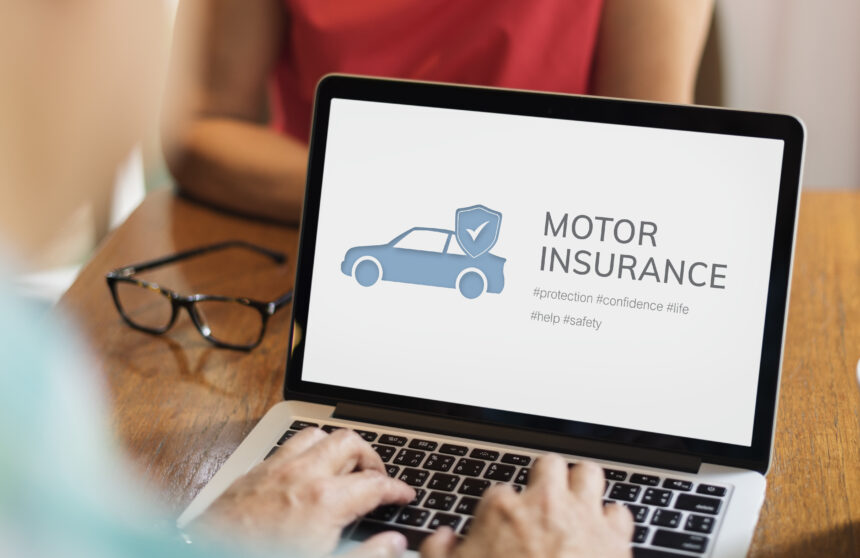Introduction: Your Roadmap to Affordable Car Insurance
If you’re like most drivers, car insurance probably feels like a frustrating expense—essential but expensive. Whether you’re a new driver, a parent with teen drivers, or someone simply looking to lower your monthly bills, this guide is for you. We’ve created the ultimate 10-step plan to help you find cheap car insurance without sacrificing quality coverage. These practical strategies, expert insights, and actionable steps will help you drive down your costs and give you peace of mind.
According to the National Association of Insurance Commissioners (NAIC), the average annual cost of car insurance in the United States is over $1,200, with many drivers paying significantly more due to poor driving history, expensive vehicles, or living in high-risk areas. But here’s the good news: there are numerous ways to reduce your car insurance premium without cutting essential coverage. In this comprehensive guide, we’ll walk you through everything you need to know to start saving today.
Target Keywords:
- Cheap car insurance
- Affordable car insurance
- Low-cost auto insurance
- Car insurance discounts
- Save on car insurance
- Compare car insurance rates
- Best budget car insurance
- Inexpensive auto coverage
- Tips to lower car insurance
- Car insurance savings
Step 1: Understand What Affects Your Car Insurance Rate
Your car insurance premium isn’t random. It’s calculated based on several key factors, including your driving record, age, location, credit score, type of car, mileage, and even marital status. Understanding these variables is essential for anyone looking to cut costs.
Insurance providers use statistical data to assess how likely you are to make a claim. The more risk you represent, the higher your premiums will be. For instance, a 22-year-old male driving a sports car in a high-theft urban area will likely pay more than a 45-year-old woman with a safe sedan in a suburban neighborhood.
Expert Insight: “Understanding the elements that influence your premium is the first step in managing your costs. Once you know what insurers look for, you can work to optimize those factors.” — Sarah Thompson, Insurance Analyst at ValueQuote
Keyword Variations:
- Factors affecting car insurance
- Why is my car insurance high?
- How car insurance is calculated
Step 2: Compare Multiple Quotes Online
Never settle for the first quote you receive. Many people overpay for car insurance simply because they don’t shop around. Online platforms like The Zebra, NerdWallet, Compare.com, and Gabi can help you compare quotes from multiple insurers in minutes.
Each insurer evaluates risk differently and offers different discounts, so the same driver may receive very different quotes. Always compare at least 4-5 options before committing.

Image source: Freepik
Expert Insight: “Insurance providers price risk differently. What’s expensive with one company might be affordable with another.” — David Lu, Auto Insurance Consultant at PolicyFinder
Keyword Variations:
- Compare car insurance quotes
- Car insurance quote comparison tools
- Best insurance comparison sites
Step 3: Bundle Your Policies
Bundling is one of the easiest and most effective ways to save. Most major insurers offer discounts of 10–25% if you purchase more than one policy, such as home, renters, or life insurance, alongside your car insurance.
This approach simplifies your bills and increases your loyalty discount, potentially unlocking additional perks like accident forgiveness or deductible savings.
Expert Insight: “Policy bundling can save you anywhere from 10% to 25%, depending on the provider. It’s an easy way to reduce costs without giving up coverage.” — Michelle Rayburn, Licensed Insurance Agent
Keyword Variations:
- Bundle auto and home insurance
- Insurance bundling discounts
- Multi-policy savings
Step 4: Increase Your Deductible
Your deductible is the amount you pay out of pocket before your insurance kicks in after a claim. Increasing your deductible from $250 to $500 or even $1,000 can substantially reduce your premium. This is especially effective for drivers who rarely make claims.
Just ensure that you have the higher deductible amount saved in an emergency fund, so you’re not caught off guard if you need to make a claim.
Expert Insight: “A higher deductible means more risk for you in the event of a claim, but if you’re a safe driver, it’s often a smart trade-off.” — Laura Kim, Senior Advisor at DriveSafe Financial
Keyword Variations:
- High deductible car insurance
- Lower premiums with higher deductible
- Auto insurance deductible strategy
Step 5: Maintain a Clean Driving Record
Your driving history is one of the most significant factors insurers consider. Even one ticket or minor accident can raise your premiums for years. To keep your record clean:
- Obey speed limits
- Avoid distracted driving
- Attend a defensive driving course
- Drive defensively to avoid accidents
Some insurance companies offer telematics devices or apps to monitor your driving habits and offer discounts for safe behavior.
Expert Insight: “Even one speeding ticket can impact your rate for up to three years. Safe driving is a long-term investment.” — Carlos Dean, Auto Risk Manager at SafeDrive Plus
Keyword Variations:
- Clean driving record insurance benefits
- Drive safely and save
- How to avoid rate hikes
Step 6: Take Advantage of Discounts
Most people don’t realize how many discounts are available. Ask your insurance agent about:
- Good Student Discounts
- Safe Driver Discounts
- Low Mileage Discounts
- Military or Veterans Discounts
- Defensive Driving Course Discounts
- Loyalty Discounts
- Paid-in-Full Discounts
Stacking multiple discounts can lead to big savings.
Expert Insight: “Don’t leave money on the table. Discounts can stack, especially for students and low-mileage drivers.” — Nina Patel, Insurance Savings Expert
Keyword Variations:
- Car insurance discount list
- Auto insurance savings tips
- Student driver insurance discounts
Step 7: Choose the Right Vehicle
The car you drive has a direct impact on your insurance costs. Expensive cars cost more to repair, and cars with high theft rates result in higher premiums.
Generally, sedans and SUVs with strong safety ratings and low repair costs are the most affordable to insure. Look for models with safety features like anti-lock brakes, airbags, anti-theft systems, and lane departure warning systems.
Expert Insight: “Insurers look at safety ratings, repair costs, and theft statistics. Choosing a car wisely can save you hundreds.” — Eric Nguyen, Automotive Insurance Advisor
Keyword Variations:
- Cheapest cars to insure
- Car insurance by vehicle type
- Vehicle insurance cost comparison
Step 8: Improve Your Credit Score
In many states, credit score plays a major role in determining your premium. Drivers with poor credit may pay significantly more for the same coverage.
To boost your credit score:
- Pay bills on time
- Keep credit card balances low
- Avoid unnecessary hard inquiries
- Check your credit report for errors
Improving your credit benefits every area of your financial life, including insurance.
Expert Insight: “Credit is a risk indicator. Improving your score not only helps you get better loan terms—it can also reduce your car insurance costs.” — Samantha Lee, Financial Planner
Keyword Variations:
- Car insurance and credit score
- Improve credit to lower insurance
- How credit affects auto insurance
Step 9: Review and Adjust Your Coverage Regularly
Life changes—your car ages, you move, your kids start driving. Each of these can impact your coverage needs. Review your policy annually to avoid paying for coverage you no longer need or missing out on discounts.
Examples of things to reassess:
- Do you still need full coverage?
- Has your mileage decreased?
- Have your circumstances changed (e.g., working from home)?
Expert Insight: “People often forget to update their policies after life changes—like moving, marriage, or aging vehicles. You could be over-insured.” — Jonathan Blake, Insurance Policy Consultant
Keyword Variations:
- Car insurance review tips
- When to update your insurance
- Adjusting auto policy coverage
Step 10: Consider Usage-Based or Pay-Per-Mile Insurance
If you drive less than 10,000 miles a year, you could benefit from usage-based or pay-per-mile insurance. Companies like Metromile, Root, and Nationwide SmartRide offer programs that track your driving and offer reduced rates based on safe habits and low mileage.
These plans are perfect for remote workers, retirees, or anyone who drives infrequently.
Expert Insight: “Pay-as-you-drive models are perfect for remote workers or retirees. You only pay for what you use.” — Amy Winters, Telematics Specialist at AutoMeter AI
Keyword Variations:
- Pay-per-mile insurance
- Usage-based car insurance
- Low mileage insurance plans
Conclusion: Drive Smart, Save Big
Finding cheap car insurance doesn’t mean compromising on coverage. It means being strategic—knowing what factors affect your rate, comparing quotes, and taking advantage of discounts. By following these 10 proven steps, you can unlock major savings while still protecting yourself and your vehicle.
As you implement these strategies, keep a record of your quotes and coverage changes. Treat your car insurance like any other financial investment. Review it yearly, adjust when needed, and don’t hesitate to switch providers if you find a better deal.
Final Thought: The key to affordable insurance is not a one-time fix but an ongoing process of evaluation and optimization.
More on Afripati


